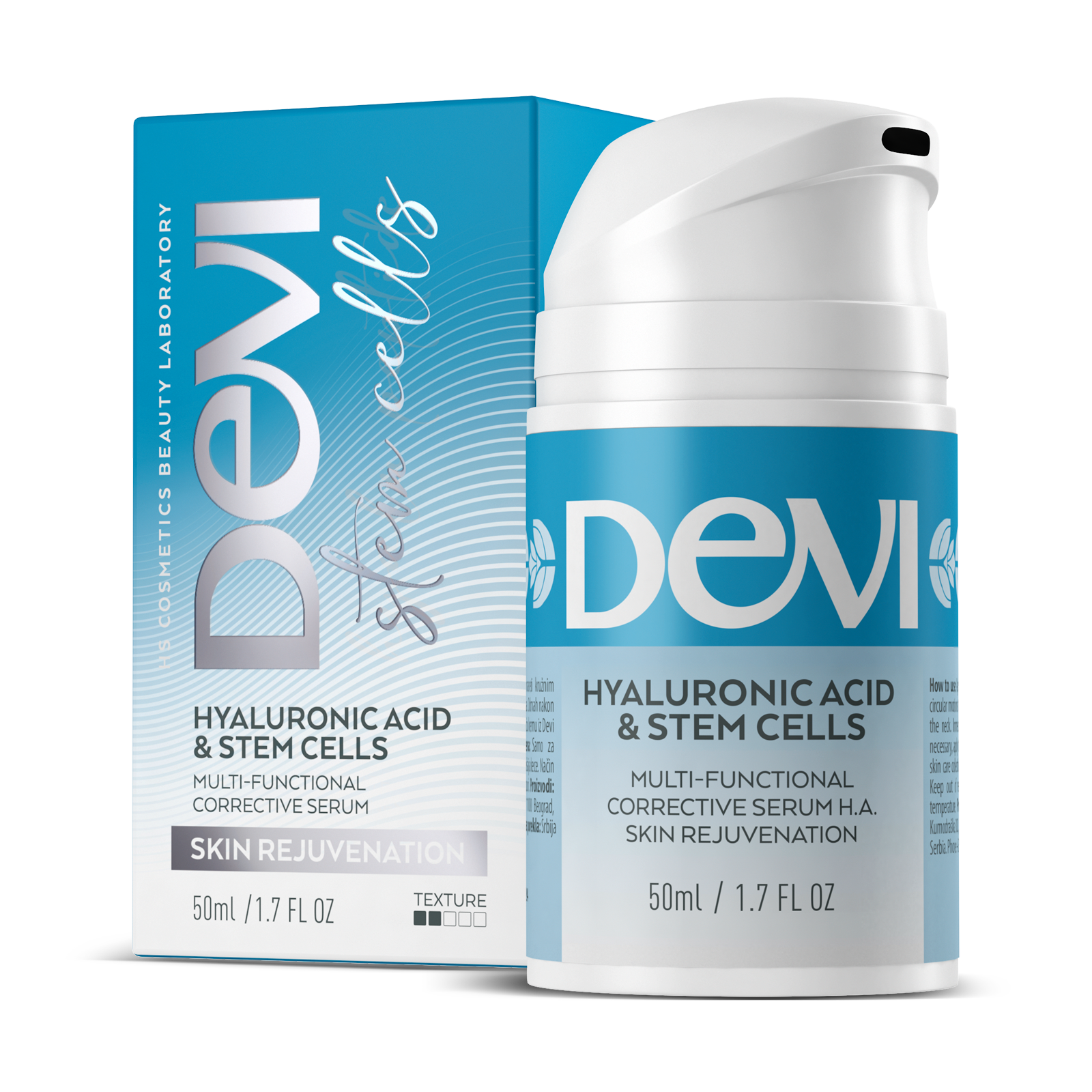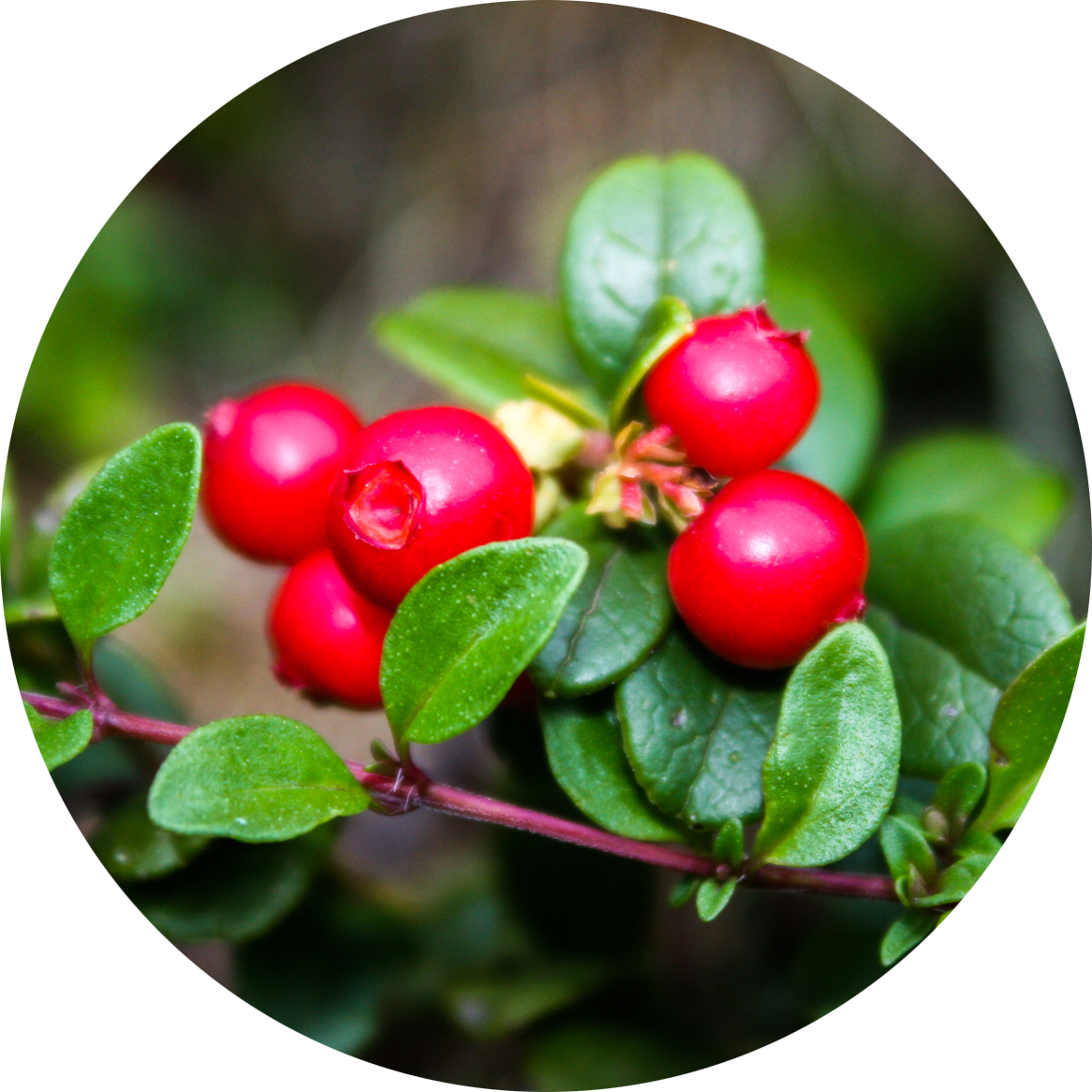(Vaccinium vitis-idaea)
Although our ancestors often used it, cranberry only recently gained great popularity when its very healing effect on the urinary system was confirmed. What is important to know is that there are several types of cranberries and that two stand out in terms of their healing properties. One of them is simply called cranberry (Vaccinium oxycoccos for the European variety and Vaccinium macrocarpon for the American one), is cultivated widely and is a well-known ingredient in sauces, jams and cakes; the other one called lingonberry or mountain cranberry (Latin: Vaccinium vitis-idaea) is mostly harvested in the wild and is common in northern Europe and America. Compote, juices and jams are traditionally prepared from mountain cranberries too: in Scandinavia, its sauce is served with game; in Russia, berries used to be preserved in water and consumed in wintertime to prevent scurvy. This cranberry water is mentioned in Pushkin’s Eugene Onegin. Mountain cranberries have indeed always been a valuable source of nutrients, especially during the long Russian winter: its organic acids, vitamins A, C, B, potassium, calcium, magnesium and phosphorus have contributed to Nordic peoples’ steel health and stamina.
Lingonberry has white flowers and round, small fruit, unlike ordinary cranberry whose flowers are pink and the fruit larger and elongated. This plant is medicinal in its entirety; its dried leaf and fruit were used in folk medicine. Today we know that Nordic peoples can thank their stamina to its many antioxidants. It cannot be found at farmers’ markets or supermarkets nowadays as it is not very popular. In fact, it is quite unknown and attempts to grow it are still in their infancy. Everything that is rare is precious and that is why today the extract of this plant is an expensive ingredient in modern preparations.
LINGONBERRY – SUPERFOOD
Lingonberry harvested in the wild is a real “superfood”. It bears this official title because of its proven properties, high content of antioxidants and other ingredients thanks to which it has an incredible health effect. Numerous scientific studies have proven that the plant has powerful anti-inflammatory, antioxidant and anti-cancer action. By preventing inflammation, it has a beneficial effect against diabetic obesity and neurodegenerative changes. It is also a strong antiseptic. What exactly is healing about it?
This plant owes its antioxidant effect to the high concentration of vitamins C, A, E and polyphenols (tannins), flavonoids, polyphenolic acids, anthocyanins, procyanidins… A total of 28 phenolic ingredients have been identified in its fruit, more than in any other berry; the highest proportion of phenols are anthocyanins glycosides that give the berries their red colour. There are also ferulic, coumarin, caffeoylquinic and benzoic acids, flavonols such as quercetin and its glycosyl derivatives, catechin and epicatechin, kaempferol glycosides, tripertenes – alpha and beta amyrin, betulin, campesterol, lupeol, sitosterol, uvaol, oleanolic and ursolic acids… Cyanidin 3-O-galactoside is a glycoside with proven extremely beneficial effects on the body. Anthocyanins in lingonberry have been proven to protect heart cells from oxidative stress, as well as the entire body from degenerative changes and chronic inflammation. The antioxidant action of these ingredients has been proven to be effective in cancer and leuakemia. Lingonberry extract effectively causes apoptosis – cell death in tumours – it prevents their formation and spread.
The polyphenols of this fruit are absorbed through the digestive tract and then enter the bloodstream and tissues, reaching all the way to the brain which they protect from neurodegenerative changes caused by ageing. Thus, lingonberry is an ideal prevention against dementia and Alzheimer’s disease.
With its anti-inflammatory effect, lingonberry extract acts directly against adipose (fatty) tissue, thus preventing obesity, insulin resistance, type 2 diabetes and metabolic syndrome, which are now taking epidemic proportions. Cranberry literally inhibits the activity of digestive enzymes responsible for the absorption of fats and sugars from food in the intestines, as well as the activity of pancreatic lipase.
And that is not all. Lingonberry has very strong antimicrobial properties and is effective against a number of strains: Porphyromonas gingivalis, Prevotella intermedia, Streptococcus mutans, Streptococcus sobrinus, Streptococcus sanguinis, Escherichia coli, Micrococcus luteus, Pseudomonas putida, Bifidobacterium spp., Clostridium spp., Aspergillus niger, Proteus myxofaciens, Candida glabrata, Coxsackievirus, influenza virus… If we were wondering how cranberry water can stay fresh without preservatives, the reason lies precisely in the antiseptic properties of the plant that prevents a number of strains of fungi and mould. Therefore, the modern food industry is also very interested in its natural protective properties.
SKIN PROTECTOR
All these protective and healing properties of lingonberry are best reflected on our skin. Its anti-proliferative activity is particularly pronounced when it comes to harmful UVB rays, with an inhibition success rate of as much as 96 per cent. This means that – with its tannins – lingonberry extract does not only preserve the skin’s youthful appearance and prevents the formation of wrinkles and photoaging, but it also has a strong ability to suppress melanoma cells. If we add to this its anti-inflammatory and regenerative effect, it is clear that this plant’s extract can be used to prevent or cure the most severe skin diseases, such as psoriasis; the cosmetics industry recognises it as a valuable ingredient in creams and serums used for skin rejuvenation, improvement of its elasticity and reduction of wrinkles, which has been proven by studies.
All the power of lingonberry is contained in its stem cells which are part of the exceptional Stem Cells and Hyaluronic Acid Serum from the Herba Svet laboratory. In addition to lingonberry, this corrective serum also contains orange stem cells, top quality hyaluronic acid, squalane, tocopherol, beta glucan, as well as a botanical mix of eight medicinal plants. The synergistic effect of the ingredients in the serum contributes to the skin’s rehydration, tone and elasticity as it directly stimulates collagen synthesis and the reduction of wrinkles, blemishes and freckles, and provides excellent protection against harmful sun radiation.

